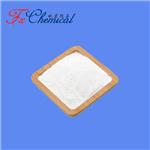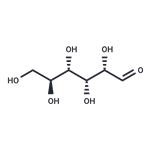L-(−)-Glucose is an enantiomer of the more common D-glucose. L-Glucose is not bioavailable to cells as an energy source because it cannot be phosphorylated by hexokinase. However, certain L-glucose-utilizing bacteria that contain NAD+-dependent L-glucose dehydrogenases capable of oxidizing L-glucose have been identified.
L-(-)-Glucose is an enantiomer of the more common D-glucose a naturally occurring carbohydrate used in an abundance of cellular processes. L-Glucose is a synthetic sugar used in the formation of L-Glucose Pen taacetate, a potential therapeutic agent regarding type II diabetes. In addition, L-glucose can be used as a colon cleansing agent for before a colonoscopy procedure.
L-Glucose is the enantiomer of D-Glucose (G595000), a naturally occurring carbohydrate used in an abundance of cellular processes. L-Glucose is a synthetic sugar used in the formation of L-Glucose Pen
taacetate (G596510), a potential therapeutic agent regarding type II diabetes. In addition, L-glucose can be used as a colon cleansing agent for before a colonoscopy procedure.
L-(-)-Glucose has been used in phospho-buffered saline (PBS) solution to induce metabolic responses in Saccharomyces cerevisiae. It has also been used to study the substrate competition pattern of IICB glucose transporter.
ChEBI: The L-enantiomer of aldehydo-glucose.
L-(?)-Glucose is an enantiomer of the more common D-glucose. L-Glucose cannot be used by cells as an energy source because it cannot be phosphorylated by hexokinase.



